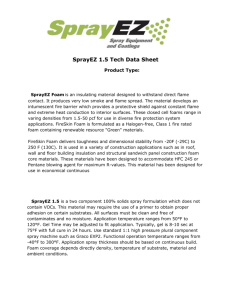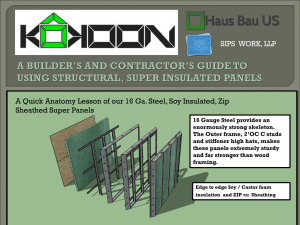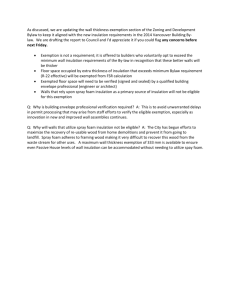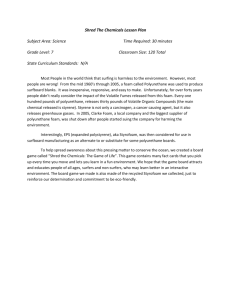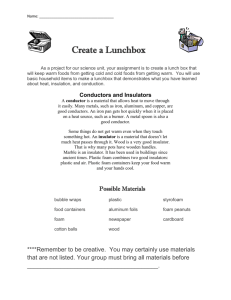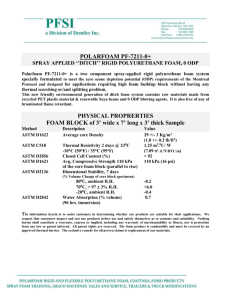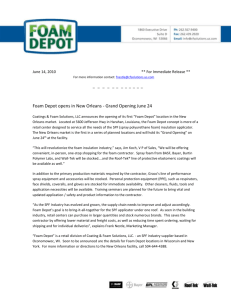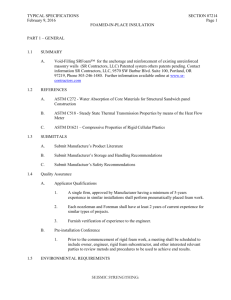CoreFoamTM Masonry Foam Insulation*Specification Guide*AIA
advertisement
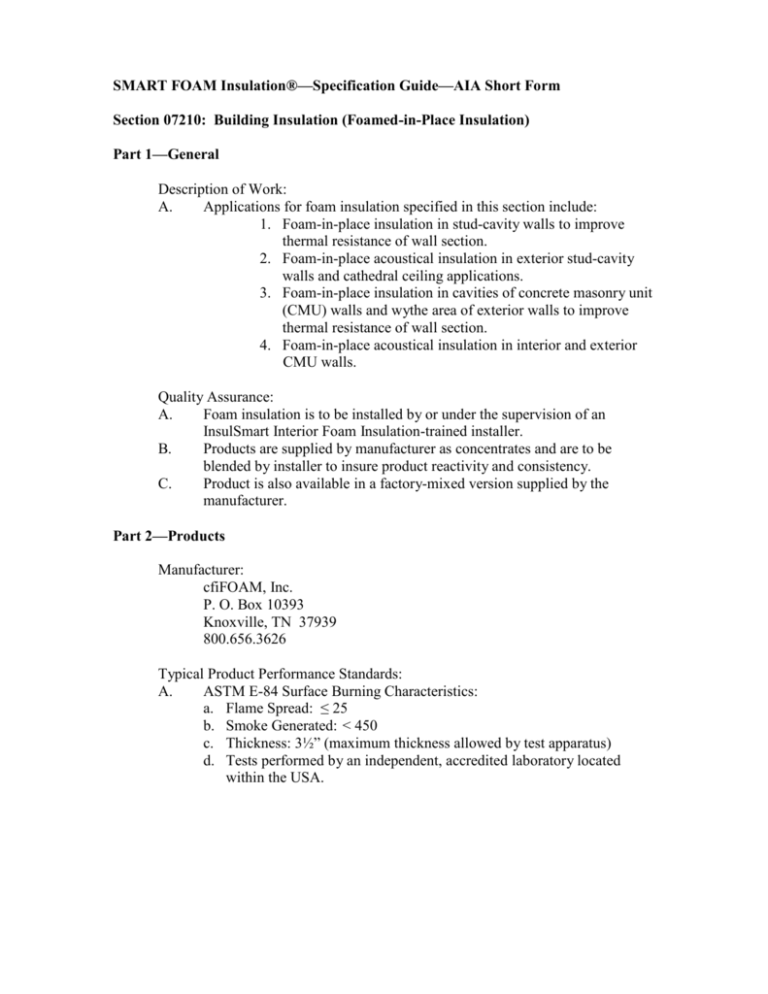
SMART FOAM Insulation®—Specification Guide—AIA Short Form Section 07210: Building Insulation (Foamed-in-Place Insulation) Part 1—General Description of Work: A. Applications for foam insulation specified in this section include: 1. Foam-in-place insulation in stud-cavity walls to improve thermal resistance of wall section. 2. Foam-in-place acoustical insulation in exterior stud-cavity walls and cathedral ceiling applications. 3. Foam-in-place insulation in cavities of concrete masonry unit (CMU) walls and wythe area of exterior walls to improve thermal resistance of wall section. 4. Foam-in-place acoustical insulation in interior and exterior CMU walls. Quality Assurance: A. Foam insulation is to be installed by or under the supervision of an InsulSmart Interior Foam Insulation-trained installer. B. Products are supplied by manufacturer as concentrates and are to be blended by installer to insure product reactivity and consistency. C. Product is also available in a factory-mixed version supplied by the manufacturer. Part 2—Products Manufacturer: cfiFOAM, Inc. P. O. Box 10393 Knoxville, TN 37939 800.656.3626 Typical Product Performance Standards: A. ASTM E-84 Surface Burning Characteristics: a. Flame Spread: ≤ 25 b. Smoke Generated: < 450 c. Thickness: 3½” (maximum thickness allowed by test apparatus) d. Tests performed by an independent, accredited laboratory located within the USA. B. Thermal Conductivity: a. k-value 0.22 BTU/(hr ft2 oF in) @ 75oF b. k-value 0.20 BTU/(hr ft2 oF in) @ 25oF C. Thermal Resistance: a. R-value = 4.6 per inch @ 75oF b. R-value = 5.1 per inch @ 25 oF Part 3 – Execution Installation Guidelines: A. All open cavities within each wall to be insulated shall be filled with foam insulation as shown on the drawings. B. InsulSmart Interior Foam Insulation ® shall be either mixed by an authorized installer prior to each job or the factory-mixed version shall be supplied by the manufacturer. C. Stud wall cavities can be filled with foam after gypsum wallboard is installed using either of three (3) methods: 1. Top-Fill Method: The installer inserts and extended whip hose through a 2-inch minimum diameter hole drilled in the top plate, extending the hose to begin installing foam from the bottom of the cavity, gradually withdrawing the hose as the foam fills the cavity. 2. Side-Fill Method: Drill 5/8-inch to 7/8-inch holes in each horizontal taped joint before injecting foam into the cavity through the hole in 4foot lifts until it completely fills each cavity as evidenced by foam exiting a small vent hole at the top. 3. Side-Fill Method (Alternate): Drill a 2-inch minimum diameter hole in the center of the stud cavity, insert a whip hose and fill the lower half of the cavity before repositioning the whip hose to similarly fill the upper portion of the cavity. a. Fabric Supported Method: Wall cavities can be filled with foam before gypsum wallboard is installed if first either open-mesh (1/4” max.) or non-woven construction fabric or 4 mil polyethylene is stretched tightly and stapled to the framing faces to contain and support the foam during application. The authorized installer then slit a 1” hole through the fabric and injects the foam to fill the cavity through the hole and fills in 4-foot lifts. b. Side-Fill Method (Alternate). Excess foam exiting through the fabric is easily swept from the insulated surfaces with a broom for disposal. Benefits: i. Enables visual confirmation of foam placement during application. ii. The foam is biodegradable; thus, may be disposed on-site by mixing with soil used as a turf substrate or landscaping. iii. Facilitates curing before installing gypsum wallboard. D. CMU cores can be filled with foam using either top-fill or, more commonly, pressure-injection techniques. 1. For top-fill, the installer must use an extension tube to begin installing foam from the bottom of the cavity, withdrawing the extension tube as foam fills the cavity. 2. For pressure-injection, holes are drilled in each CMU—3/8” holes for visually sensitive areas for use with a low-volume touch-up gun, 5/8” holes for use with a standard foam gun, or 7/8” holes for use with a high-volume production gun—at an approximate height of four feet from finished floor level. Normally each vertical core is drilled and injected with foam in 10’-24’ lifts, although in 8” CMU, alternating cores can be used. 3. Core Foam Masonry Foam Insulation is injected until it completely fills each vertical core of block cells, evidenced by foam exiting the adjacent injection hole. Repeat steps b and c at an approximate height of 10’-14’ above the initial row of injection holes, or as needed, until the wall is completely filled. 4. Patch holes with mortar to resemble existing surface. E. Product should be protected from excess moisture during initial 24 hour curing period after installation. A 72-hour curing period is recommended prior to painting; however, in each case the coatings contractor should test the walls to confirm the gypsum wallboard’s surface is suitable for painting before beginning paint application. F. Foam should not be exposed to surfaces over 190°F for an extended period of time.
